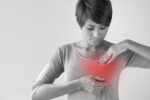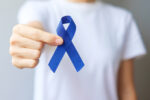Introduction
Breast cancer is a prevalent and potentially life-threatening disease that affects many women worldwide. While the exact causes of breast cancer are not fully understood, researchers have identified several risk factors that can increase a person’s chances of developing the disease. By understanding these risk factors, individuals can take proactive steps to reduce their risk and promote early detection. In this article, We will explore the various factors that contribute to breast cancer and provide insights into how you can make informed decisions to safeguard your health.
1. Genetic Factors
BRCA1 and BRCA2 Mutations
BRCA1 and BRCA2 are genes that produce proteins that help suppress the growth of tumors. However, certain mutations in these genes can significantly increase the risk of developing breast cancer. Individuals with a family history of these mutations should consider genetic testing to assess their risk and explore preventative measures such as increased surveillance or preventive surgeries like mastectomy.
Family History
Having a first-degree relative (such as a mother, sister, or daughter) with breast cancer can raise your own risk. The more relatives affected, especially at a young age, the greater the risk. Regular screenings and awareness of potential symptoms are essential for early detection and prompt treatment.
2. Hormonal Factors
Age at Menarche and Menopause
Early onset of menstruation (before the age of 12) or late menopause (after the age of 55) can increase the risk of breast cancer. Prolonged exposure to estrogen, a hormone involved in the menstrual cycle, may contribute to the development of breast cancer cells.
Hormone Replacement Therapy
Postmenopausal women who undergo hormone replacement therapy (HRT) using estrogen and progesterone may have an increased risk of developing breast cancer. It is important to discuss the potential risks and benefits of HRT with a healthcare professional before considering this treatment option.
3. Lifestyle Factors
Physical Inactivity
A sedentary lifestyle is associated with a higher risk of breast cancer. Engaging in regular physical activity, such as walking, jogging, or swimming, can help reduce this risk. Aim for at least 150 minutes of moderate-intensity exercise per week.
Alcohol Consumption
Drinking alcohol in excessive amounts has been linked to an increased risk of breast cancer. Limiting alcohol intake to moderate levels (up to one drink per day for women) can help mitigate this risk.
Obesity
Obesity and being overweight are known risk factors for various types of cancer, including breast cancer. Maintaining a healthy weight through a balanced diet and regular exercise can contribute to lowering the risk.
4. Reproductive Factors
Late or No Pregnancy
Women who have their first pregnancy after the age of 30 or who have never been pregnant are at a slightly higher risk of developing cancer. However, the protective effects of pregnancy and breastfeeding can still help reduce the overall risk.
Long-Term Use of Oral Contraceptives
The use of oral contraceptives for an extended period, typically five years or more, may slightly increase the risk of breast cancer. However, the risk returns to normal once the use of contraceptives is discontinued.
Breastfeeding
Breastfeeding offers numerous health benefits for both the mother and child. It has been found to reduce the risk of breast cancer, particularly if the breastfeeding period extends for one year or longer. Consider breastfeeding as an important part of your postpartum journey.
5. Environmental Factors
Exposure to Ionizing Radiation
High levels of exposure to ionizing radiation, such as from previous chest radiation therapy or repeated imaging tests using radiation, can increase the risk of breast cancer. It is crucial to discuss the potential risks and benefits of any medical procedures involving radiation with your healthcare provider.
Chemical Exposures
Certain chemicals, such as those found in some pesticides, plastics, and personal care products, may have estrogen-like properties that can contribute to the development of breast cancer. Minimize exposure to such chemicals by choosing natural and organic products whenever possible.
Conclusion
Breast cancer is a complex disease influenced by various risk factors. While some factors, such as genetic predisposition, cannot be changed, many lifestyle choices can significantly impact your risk. By understanding these risk factors and making informed decisions, such as maintaining a healthy weight, engaging in regular physical activity, and undergoing recommended screenings, you can take proactive steps to reduce your risk of developing cancer. Remember, early detection through regular self-examinations and mammograms is vital for successful treatment outcomes.














[…] Health […]
[…] Breast cancer develops when the cells in the breast begin to grow and multiply abnormally. These cancerous cells can form a tumor, which may be felt as a lump in the breast or detected through medical imaging tests. Breast cancer can spread to other parts of the body if not diagnosed and treated early. […]